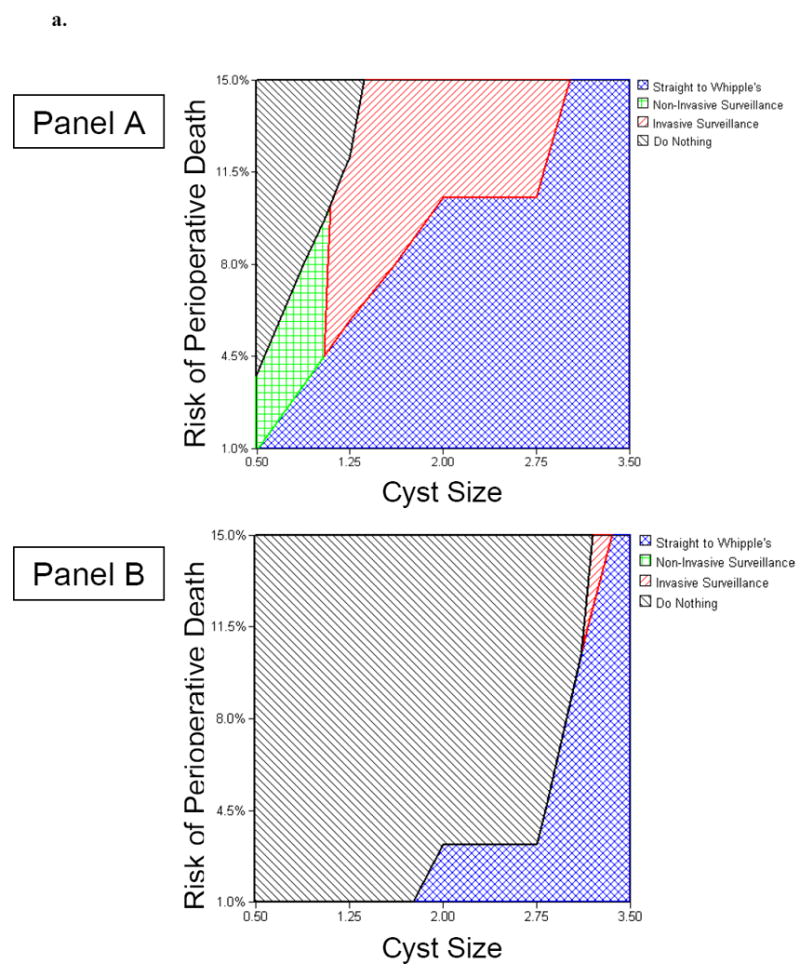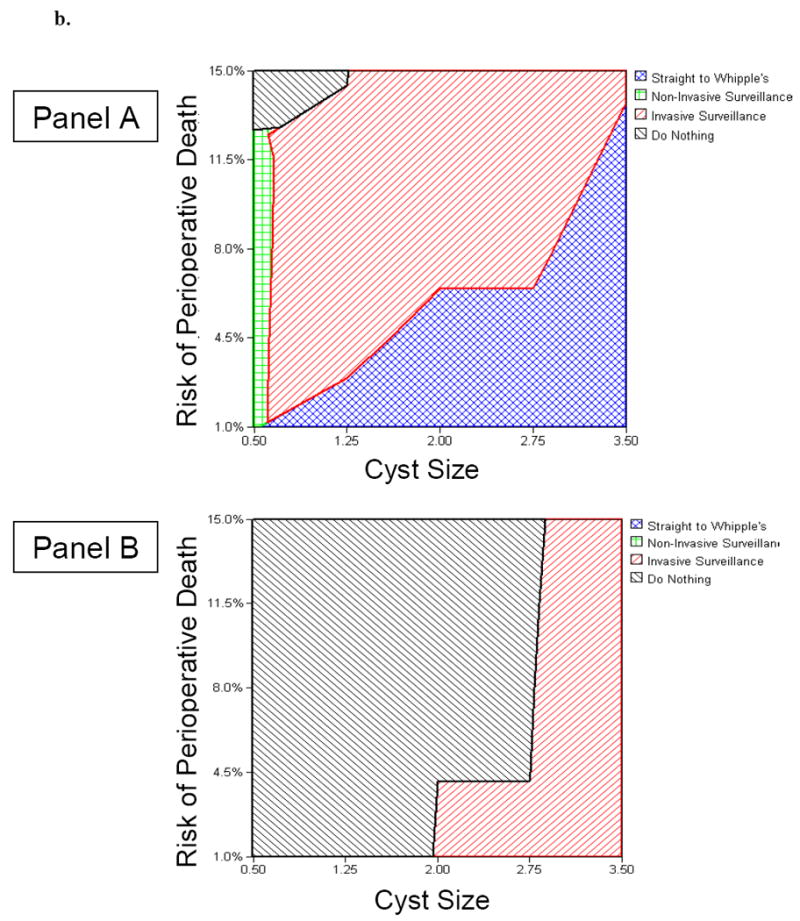Figure 2.


Clinical Nomograms to Guide Decision-Making in a Hypothetical 65-Year-Old Patient with Suspected BD-IPMN (Figure 2a) and a Hypothetical 85-Year-Old Patient with Suspected BD-IPMN (Figure 2b).
Panel A. Nomogram for a patient focused primarily on maximizing overall survival, independent of quality of life. Panel B. Nomogram for a patient focused on maximizing quality-adjusted survival.
Figure 2a. For example, for a 65 year old patient with a 2cm cyst and an estimated 5% risk of perioperative mortality from a Whipple operation, surgery maximizes overall survival, yet doing nothing maximizes quality-adjusted survival. However, if the cyst exceeds 3cm in size, then surgery is warranted in both instances (see text for details).
Figure 2b.For example, for an 85 year old patient with a 2cm cyst and an estimated 8% risk of perioperative mortality from a Whipple operation, surgery maximizes overall survival, yet doing nothing maximizes quality-adjusted survival. However, if perioperative mortality exceeded 13%, then surgery would never be warranted for this patient (see text for details).
